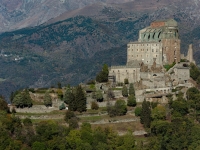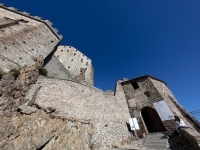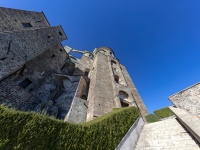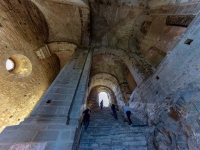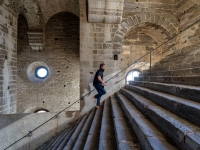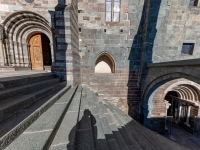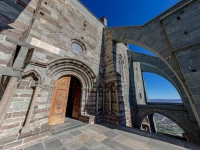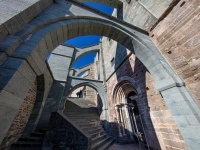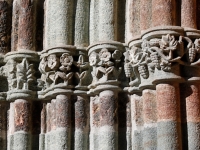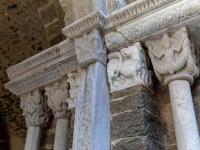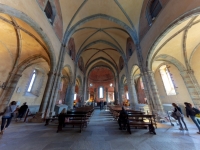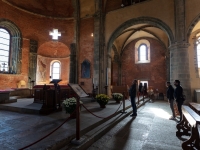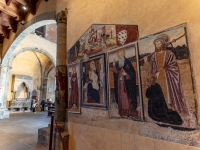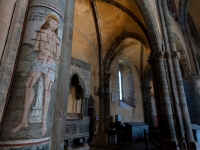Reisen
The Sacra di San Michele Piedmont Region of Italy
Sacra di San Michele
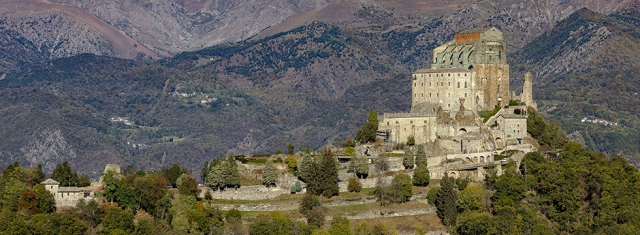
The Sacra di San Michele Piedmont region of Italy (Quelle: Roberto Magni By Foto ReD Photographic Agency)
The Sacra di San Michele evokes beauty, charm and mystery. That mystery that has surrounded it since its construction, which took place between 983 and 987 AD. An imposing abbey which, defying the principles of physics, dominates the top of Mount Pirchiriano, at the entrance to the Susa Valley.
A wonderful place full of spirituality, originally guarded by Benedictine monks and which since 1837 has been entrusted to the Rosminian fathers. The history, the spiritual value and the landscape that surrounds it inspired the writer Umberto Eco for the best-seller "The Name of the Rose" and make the Sacra an attractive destination for visitors from all over Europe.
A journey to the origins of the Sacra di San Michele and to discover the wonders that have made it famous throughout the world.
The Sacra di San Michele originates on the top of Mount Pirchiriano, a rocky spur belonging to the Rocciavré group in the Cottian Alps (962 metres). Pirchiriano is the ancient name of the mountain, an elegant form of Porcarianus or Mount of Pigs, similarly to the nearby Caprasio, or Mount of Goats, and Musinè or Mount of Donkeys.
The mountain has seen the presence of human settlements since prehistoric times. In subsequent periods it was fortified by the Ligurians and then by the Celts under the dominion of the two Cozio kings. In 63 AD when the Cottian Alps became a Roman Province, the place, given its strategic position, was exploited by the Romans as a castrum, or area of military interest. From 569 AD the Lombards invade and occupy the Cottian Alps. It is in this period that the famous "Lombard Locks" were built in the Susa Valley. These built walls and towers across the valley when, under the leadership of their king Desiderius and his son Adelchi, they massed to resist the entry into Italy of Charlemagne, king of the Franks. In 773 AD. the latter, winners of the Battle of the Chiuse, conquered the area and remained there until 888 AD, the year in which the Saracens invaded the western Alps and exercised their dominion for around eighty years.
At the end of the 10th century, Saint John Vincent, a disciple of Saint Romuald, began his hermit life up here. The choice of place is certainly conditioned by the grandeur, the sacred predisposition of Mount Pirchiriano and the pre-existence of a hermit colony on Mount Caprasio. On the threshold of the year one thousand, a character who seeks redemption from a questionable past bursts into this hermitage of Giovanni Vincenzo: he is Count Ugo (Ugone) of Montboissier, a rich and noble lord of Auvergne, who went to Rome to ask for indulgence to the Pope. The Pope, as penance, allows him to choose between a 7-year exile and the task of building an abbey. We are at the end of the 20th century when the construction of the monastery began, then entrusted to five Benedictine monks. Through the initiative of Hugh of Montboissier and the systematic recruitment of abbots and monks in Auvergne, a stopping point for pilgrims of high social standing developed on the Pirchiriano, almost an international cultural centre.
The ambition for autonomy has been alive since the beginning of the history of the monastery, concerned with escaping the jurisdiction of the bishops of Turin: in particular in the 11th century the monks, with their most famous abbot Benedict II, decidedly sided in favor of the centralist reform Roman. Having quickly obtained autonomy and independence from the temporal authority and that of the bishop, the abbey, thanks to its broad and intense hospitality, can encourage exchanges not only of a practical nature but of profound spiritual significance, which contribute to create the common heritage of a great religious civilization. It is in this period that the Sacra extends its possessions in Italy and Europe, over which it exercises spiritual, administrative, civil and criminal rights. From the beginning until the first half of the 14th century, the monastery experienced its most favorable period under the guidance of the Benedictine abbots, which was followed by half a century of decline.
In 1379 the misgovernment of Abbot Pietro di Fongeret induced Amedeo VI of Savoy (the Green Count) to ask the Holy See to abolish the role of the monk abbot, replacing that of the commendatory. With the appointment of the commendatories, the agony of the monastery began: from 1381 to 1622 the monks were governed by priors, while the commendatory abbots, always far from the monastery, enjoyed its income. One of them, Cardinal Maurizio of Savoy, convinced Pope Gregory XV in 1622 to suppress the monastery, now inhabited by only three monks. The revenues that were used for the maintenance of the monks were allocated to the construction of the Collegiate Church of the Canons of Giaveno, who succeeded the disappeared monks in the obligations towards the monastery: the care and service of the Sanctuary belonged to them until 1629. Thus came to an end the powerful Benedictine order of Chiusa, after a life of more than six hundred years.
weitere Informationen: https://www.redmagazine.red
Für den Artikel ist der Verfasser verantwortlich, dem auch das Urheberrecht obliegt. Redaktionelle Inhalte von GDN können auf anderen Webseiten zitiert werden, wenn das Zitat maximal 5% des Gesamt-Textes ausmacht, als solches gekennzeichnet ist und die Quelle benannt (verlinkt) wird.

